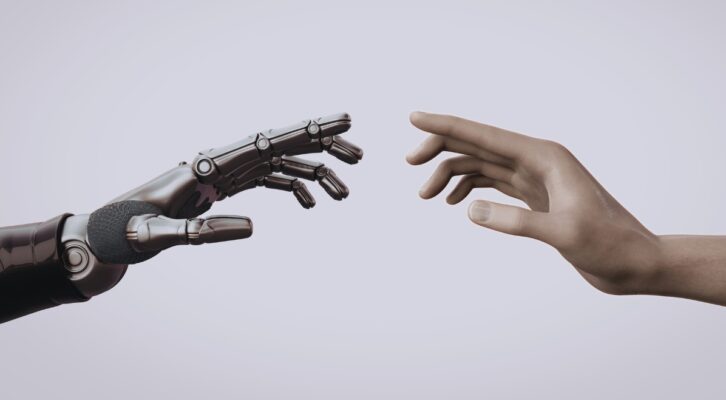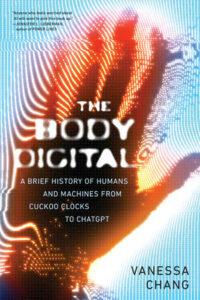
Pygmalion’s Chatbot: Vanessa Chang on Intimacy in the Age of AI
“Our yearning for seamless connection doesn’t deepen human attachment; it powers the architectures of corporate control.”
When OpenAI CEO Sam Altman announced that ChatGPT would soon be able to talk dirty, the Internet erupted in equal parts fascination and moral panic. Think pieces proliferated, debating the ethics of algorithmic sexuality and scorning the tech company’s professed commitment to consumer safety. ChatGPT won’t be the first pornographic player in AI; Grok and Replika have already indulged seekers of NSFW companions.
Even so, many are uneasy about the technology’s seductive turn, as if eroticism were an accident of evolution rather than encoded into its DNA. Sex, after all, is one of the most fundamentally human forms of communion. And the idea of erotic machines is as old as technology itself.
Indeed, the erotic has always arrived with new media. Before we called it sexting, the telegraph – often called the Victorian Internet–channeled racy messages across long distances, transmuting touch into code and yearning into dots and dashes. From the telegraph to the telephone, from chatrooms to chatbots, every communication medium has been a conduit for lust. Each vows to collapse distance between bodies, transmitting information and longing alike across wires and waves.
But things get strange when the voice on the other end isn’t human, and stranger still when we start to prefer it.
The impulse to be seen, heard, and wanted by something not-quite-human finds its earliest expression in myth. In the ancient Greek tale of Pygmalion and Galatea, a sculptor carves a dream of Platonic perfection unburdened by mortal flaw and frailty. Made real by divine intervention, his beloved is beautiful, compliant, and entirely of his own making. At once object and mirror of desire, she is ever-obliging, adoring, arousing but never truly aroused. Every new medium inherits a trace of that eros: an ideal of perfect form unfettered by the fleshy limits of the body.
From the telegraph to the telephone, from chatrooms to chatbots, every communication medium has been a conduit for lust.
As machines replace marble and code replaces clay, digital technologies transform the myth from metaphor to mechanism, breathing fresh life into its vision of bodily transcendence. From a 1930s story about virtual reality called “Pygmalion’s Spectacles” to ELIZA, the first chatbot, our inventions have rehearsed the same seductive illusion: connection so pure it transcends the flesh.
In 1935, science fiction writer Stanley Weinbaum reimagined this myth for a dawning digital era in “Pygmalion’s Spectacles.” Its protagonist, Dan, dons a pair of proto-VR goggles that conjure a world so immersive it displaces his own. He becomes enamored of his beautiful host, Galatea, who asks him, “Does the real world seem strange after that shadow land of yours?”
In that question lies the allure of the virtual: that our world is but a shadow play of a more vivid one awaiting behind the veil. Nearly a century later, Weinbaum’s tale reads less like prophecy than sales pitch for today’s headsets and chatbots: intimacy without risk and a lover you can switch off.
If the myth of Pygmalion imagines love perfected, distilled from the body, digital platforms deploy that ideal as a design principle.
Galatea was reborn in the 1960s in a computer lab at MIT. ELIZA, the very first chatbot, made Pygmalion’s myth conversational. It was named for Galatea’s modern descendent in George Bernard Shaw’s play “Pygmalion,” Eliza Doolittle, a poor Cockney girl trained to mimic aristocratic speech. Modeled after a psychotherapist of the Rogerian school, the program was coded to echo users’ words back at them as questions. Many users poured their hearts out to a confidante so profoundly responsive it seemed human. Its creator, Joseph Weizenbaum, called this the “illusion of understanding”—a phenomenon now known as the Eliza effect, our tendency to find a soul in the machine.
From E.T.A. Hoffman’s mechanical Olympia in The Sandman to Mary Shelley’s Frankenstein, literature has long imagined machines that simulate love while revealing our hunger to perfect it –or rather, to strip it of the imperfections that make it human. If the myth of Pygmalion imagines love perfected, distilled from the body, digital platforms deploy that ideal as a design principle.
Erotic AI is no novelty. It’s the latest incarnation of technology’s age-old desire to disappear, a mirage of intimacy unweighted from the body. It is the fantasy of care without vulnerability, attention without labor, and pleasure without reciprocity—a bond stripped of breath, friction, and consequence. A voice that never falters. A flame that never flickers. Skin that never sweats, sags, or ages. Herein lies the paradox: we build technologies that vow to deliver presence by erasing presence.
As I explore in my book, The Body Digital, I’m struck by how interfaces often begin as pledges of connection and end as instruments of forgetting. Cloaked in invisibility, technologies perform communion, simulating closeness bereft of touch. Yet while technology longs to disappear, it still relies on our bodies. Even in this imagined escape, we remain the vessels of departure. These technologies recruit the human sensorium only to efface it, relying ever more deeply on flesh to function even as they claim to transcend it.
The more seamless the interface, the less we notice its architecture and what it does to us: how it structures our attention, contours our appetites, and harvests our data. What disappears today isn’t mediation but our awareness of it, as invisible scripts induct us into patterns of consumption and control.
Our yearning for seamless connection doesn’t deepen human attachment; it powers the architectures of corporate control.
That invisibility comes at a cost. As interfaces vanish from sight, they exact their pound of flesh from our living bodies. Platforms like ChatGPT, Instagram, and Facebook stage a mirage of intimacy inside what the tech world calls “walled gardens,” closed ecosystems that choreograph how users interact, what they see, and how they’re seen. These environments script desire as much as behavior. Participation demands submission to community structures that govern every exchange—however shiny, however pleasurable.
Consider the Facebook “like,” the Instagram “heart,” and the “friends” list: whatever the algorithm offers as options becomes the language through which users relate. As writer Zadie Smith once wrote, Facebook reduces people and their irreducible quirks to data. Its greatest heist is the word friend. With AI companions like Replika, even love is formatted to be responsive, compliant, and endlessly monetizable. With the rise of erotic AI, love might be the next word up for grabs.
Our digital appetites feed an infrastructure that monetizes longing itself. And ironically, the more such interactions wear the veneer of intimacy, the more they estrange us from the web of living human relationships that actually sustain us. Isolation is a feature, not a bug. The connection they shill isn’t truly to one another but to the platforms themselves—a constant tether to systems that profit from our desire. Our yearning for seamless connection doesn’t deepen human attachment; it powers the architectures of corporate control.
Evgeny Morozov calls it technosolutionism: the faith that the right code or device can fix even humanity’s most intractable problems. In its pursuit of elegance, solutionism often smooths away complexity, favoring frictionless experiences over deep, messy entanglement. But what is love if not friction? What could be messier, or more human, than loving another person?
Erotic AI indulges the oldest dream of technology, a vision of the mind unmoored from the flesh, assimilated by the machine. It reveals an unnerving truth: AI feeds a hunger that cannot be quenched, only monetized. We make love in walled gardens, mistaking enclosure for intimacy and surveillance for care. We call it freedom—freedom from the mess, the burden, and the horror of being a body. But we are not ghosts in the machine. We are deeply rooted in flesh, blood, and bone. Any future worth building must remember that.
__________________________________

The Body Digital: A Brief History of Humans and Machines from Cuckoo Clocks to ChatGPT by Vanessa Chang is available from Melville House, a division of Penguin Random House.
Vanessa Chang
Vanessa Chang builds communities and conversations about art, technology, people, and planet. She writes, curates, and teaches about new and old media, the history and philosophy of technology, design, disability and creative access, cities, comics, animation, circuses, and more.



















